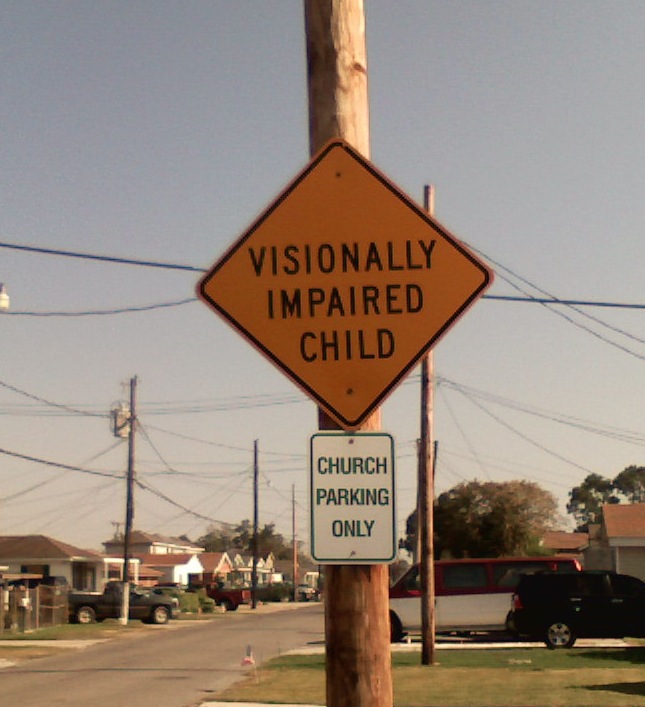Entries for the 'Uncategorized' Category
Bell Ringing
November 26th, 2008
What’s really being squandered.
I suppose I always knew this was coming, that LSU and VA hospital site plans entailing the demolition of 70+ acres of the recovering Tulane-Gravier neighborhood were not going to be subject to change, no matter what impact they would have on recovering neighborhood, no matter what cost assessments demonstrated that these plans might very well be the most expensive and lengthy delay of restoration of absolutely crucial health care to South East Louisiana. Somehow, though, knowing that this announcement would come didn’t entirely prepare me for it. After 18 years in New Orleans, from the Duke-Edwards gubernatorial runoff through all the post-Katrina fracas, it’s now that I’m most seriously questioning why I’m still here.
I don’t have it in me just now to even begin to address all the facets of what’s so wrong about this decision, which in my opinion (not completely uninformed, I hope) will set back the recovery of desperately needed health care by years, at least as much as it sets back neighborhood, economic, and housing recovery – not to mention the recovery of hope and faith.
The Squandered Heritage post linked to above raises the question, what bells do we ring here, like the San Miguel church’s bells, to restore our city to its senses? What bells peal to the fact that this is not a Preservation vs. Progress or Neighborhood vs. Public issue, that we need not live our lives on the horns of false dilemmas, or that healthcare and industries exist to serve the people that make up communities, not vice versa? That for all the “visioning” exercises New Orleanians have gone through (and are still enduring, in the course of the public element of the current Master Planning process), the abstract vision of the future of a Generic American City’s future has obscured the view of who and what we are, and the incredible potential we have to take our very real assets and make something at least as good if not better from them, rather than further compounding the Flood’s destruction?
I don’t know what bells we have, but we’re approaching the Yuletide season, so jingle whatever you’ve got.
School Facilities Master Plan for Orleans Parish: Eastbank High Schools
February 26th, 2008
On Saturday, I attended the SFMPOP community meeting for the Eastbank High Schools. Since the meeting summaries posted on their website aren’t actually meeting summaries, but rather compilations of the same building summaries posted here, here are my slapdash notes from what I saw for anyone who might be trying to follow any of this from home:
I got to the meeting a little bit late, but apparently the meeting started late, so I hadn’t missed too much. A couple staff members filled me in – there were questionnaires on the school site proposals for everyone to fill out. There had been a brief presentation on what the scenarios meant (e.g., replace on new site, repurpose existing site, renovation, replace with new school on site, additions to meet standards, quick start). Tables were marked with sign for a specific school. Participants were asked to sit at the table for the school they were interested in – those who didn’t come with an interest in a particular school could join any table they want to. Several schools had no one at their table. (A participant I spoke to later said that at one of the elementary school district meetings she’d been to previously, the same sorts of scenarios were presented, but participants were not grouped by school-of-interest.)
After the groups were given time to discuss the scenarios at their tables, the staff conducted a school-by-school presentation. The data presented on each school was brief – address, date(s) of construction, site acreage – a little less information than what’s available on the building summaries. Participants were supposed to use this information, and whatever they discussed, to rate the desirability (high, moderate, low, no opinion) of the scenarios for each of the schools (most had only one scenario), not just the one they discussed at their tables. Participants were not asked to share with the whole group what they discussed concerning their particular school.
Following the school presentations, there was a general questions-and-answers period, which was the somewhat more informative part (at least to me). The school-by-school scenarios, and whatever notes I happened to get on them (in italics), are below the Q&A:
Q&A (end of meeting):
Q: Existing schools already have leadership teams (faculty, administration, students, parents, etc.) They should be part of this process.
A: “That’s a great idea.” Vallas announced a plan on Thursday to organize involvement of existing groups, and planning team will come to visit interested PTO’s, churches, and community groups.
Q: Have you looked at creating shared facilities at schools that are near each other?
A: We’re looking at aggregating resources.
Q: What’s the timeline for the PM/NOCHC school reopening?
A: End of summer, early fall.
Q: What’s the funding?
A: Initially, FEMA money. FEMA only pays for storm-related damage though, so that won’t address all the needs. Part of the planning process is asking, “how do we fund public school [buildings - expansion, renovation, etc.] in the future?” Traditionally new building/rebuilding has required referendums – that might not be enough. Looking at funding models from Ohio, North Carolina, and Arkansas. Ohio pledges state money from their tobacco settlement. Something like that could be put in bonds, to provide longer term funds-availability. There needs to be dedicated funds allocated to a School Building Authority.
Q: Have you taken student diversity (race, class) into account?
A: “Um, yeah, I think.” We’re obligated to provide the best facilities, to take care of devastated schools, and to see to the equitable distribution of funds. (Said nothing about demographic composition of districts)
Q: re Carver: are the plans for the school itself and for the site as a whole (recreation supersite) lumped together?
A: They intend to keep the school itself in the area, although there are flooding plans. The site is huge. and a Master Plan for that site will be required. Possibility of relocating Edwards Elementary.
Q: Shouldn’t schools currently using portable classrooms be the first priority for rebuilding?
A: The modular classrooms are approved for use for 3-5 years, ideally they’ll be done in 3. The transition may need to be done incrementally. (Said nothing about priority relative to other schools)
Q: In the past, students created “unique need” facilities – e.g., on site daycare (Early Childhood Development centers) and health care. How will these be reincorporated?
A: We’re actively working with the people who provide the health clinics. We’re designing capacity for health clinics. We only plan the facilities, not what goes on inside them – daycare is something that would have to be referred to the superintendents.
Q: Density of students in a given district is skewed right now. Areas still being rebuilt will have higher student populations in the future, and since many families are currently staying with friends or relatives in less-devastated areas, those student populations may go down. Is this being taken into account?
A: We’re looking at 10-year population projections, and considering short-, medium-, and long-term needs.
Q: For school sites being repurposed – are there plans for new charters at any of those sites?
A: That’s a question for Vallas et al. The Master Plan is only about the site and the facility.
SCHOOL-BY-SCHOOL SCENARIOS
Abramson
Scenario A: Replace on New Site/Repurpose Existing Site
* Over 50% damage (FEMA estimate). Might relocate somewhere between Read Blvd and Industrial Canal (no specific site yet). Immediate neighborhood has indicated that they DO NOT want a high school where Abramson was.
Franklin
Scenario A: Moderate Renovation
Kennedy
Scenario A: Repurpose Existing Site
* Option of moving former Kennedy students to the new Lake Area high school. The Kennedy site is very low, but not over 50% damaged according to FEMA – this raises “issues” over what can be done with the property. The Lake Area school can’t be located there.
Lake Area
Scenario A: Quick Start (New Construction Underway)
* “Quick Start” – goal to complete design stage by March, begin construction in April, and open for Fall 2009. Possibly to be located somewhere along Paris Ave.
Reed
Scenario A: Moderate Renovation
Carver
Scenario A: Replace with New School on Site
* Very large site (65.23 acres) – proposed “supersite” for recreation, with baseball diamonds, Olympic-size swimming pools, etc.
Clark
Scenario A: Moderate Renovation & Additions to Meet Standards
* Needs additional space for parking, open recreational space. Does not necessarily need to be located right next to the school, could be found elsewhere in the neighborhood
Douglass
Scenario A: Major Renovation & Site Expansion
Scenario B: Replacement on New Site and Repurpose Existing Site
* Two scenarios! Very narrow site. Sounds (to me) like repurposing is what SFMPOP is pushing for, but that’s just my impression.
Lawless
Scenario A: Repurpose Existing Site
* Site to be repurposed; new school may be opened in Jackson Barracks area or Lower 9th Ward. May partner with military for school for neighborhood and National Guard families.
McDonogh 35
Scenario A: Replace with New School on New Site/Repurpose Existing Site
Scenario B: Major Renovation & Site Expansion
* Needs more space
New Orleans Center for Education of Adults
Scenario A: Repurpose Existing Site
* No plan to rebuild elsewhere
Cohen
Scenario A: Moderate Renovation & Site Expansion
* Has had renovation work done fairly recently, more to come. Needs more space: neighborhood properties might be available through Road Home Program properties.
* audience question: When will renovation start, and what will happen to the students while it takes place?
* answer: the Master Plan will have the timeline (which hasn’t been settled yet), and they’re working on establishing “swingspaces” – temporary school sites for students whose schools are being repaired/rebuilt (no set location yet)
Lusher
Scenario A: Major Renovation & Additions to Meet Standards
McMain
Scenario A: Replace with New School on New Site/Repurpose Existing Site
Scenario B: Major Renovation & Additions to Meet Standards
Priestly Junior High
Scenario A: Major Renovation & Additions to Meet Standards
Scenario B: Replace with New School on Existing Site
Rabouin
Scenario A: Major Renovation & Addition to Meet Standards & Site Expansion
* Needs a gym – originally an all-girls’ school (no gym provided). A property nearby has been identified (did not say which property)
Derham
Scenario A: Repurpose Existing Site
* Has not been used as a school for quite some time
Easton
Scenario A: Major Renovation & Site Expansion
* Presently using a field 6 blocks away for football practice. Needs closer space, looking at properties in neighborhood
John McDonogh Senior High
Scenario A: Major Renovation & Addition to Meet Standards & Site Expansion
* Proposal floated by staff presenter to demolish current gym and rebuild a gym and band facility (band currently practices in main building, disrupts classes)
New Orleans Center for Health Careers
Scenario A: General Maintenance & Additions to Meet Standards
* Currently being renovated – I got the impression that the site is used mainly for the Orleans Parish PM school now
N.O. Science & Math
Scenario A: New Site
* Must find new site – former site was leased from Delgado, and is no longer available.
Washington
Scenario A: Major Renovation & Additions to Meet Standards & Site Expansion
* Some renovation over the last couple years. Looking at nearby properties to expand.
POSSIBLE NEW SCHOOLS
There was no specific presentation of these schools – only what was already mentioned relating to other schools that might be disbanded, with students to be relocated at these (e.g. Lawless):
Abramson
Scenario A: New School on New Site
Jackson Barracks
Scenario A: New School on Existing Available Site
Lower 9th Ward
Scenario A: New School on New Site
Dark Ages
December 20th, 2007
Well, the forces that maintain that HANO’s and HUD’s (and New Orleans’ and America’s) chief fault is bad feng shui seem to have won. I guess it was foolish to have ever thought it would be otherwise – sorcery really is pretty powerful, in City Hall anyway.
Truest Words Ever Written
September 14th, 2007
On New Orleans climate:
“For summer there, bear in mind, is a loitering gossip, that only begins to talk of leaving when September rises to go.”
RIP Bruce Cat: ca. 1991 – 8/3/2007
August 5th, 2007
Bruce in 2007 – one eye shy, but as helpful as ever with crossword puzzles.
Many, many thanks to Crescent City Veterinary Hospital for all their superlative care, in life and death.
Robbing Peter to Pay Allstate
June 28th, 2007

Who really holds the keys?
I had to wonder whether it was with deliberate irony that yesterday’s Times Picayune placed the article N.O.’s plan for rebuilding passes Muster with LRA immediately beneath LRA feeds Road Home kitty, with it’s handy inset showing of the approximately $1 billion the state is adding to the Road Home program, $577.5 million is coming from CDBG funds previously slated for infrastructure repairs, and another $50 million was “carved out of other recovery spending areas” by the LRA. (The amount to be doled out for New Orleans rebuilding is $117 million – of the $1.1 billion that “officials” (whoever they are these days) say we need.) Oh, and that doesn’t count the $513 million the LRA now has access to since the 10% match of federal funds requirement was waived – $513 million the LRA had earmarked for parish recovery projects, of which New Orleans was to receive $324 million – so they can sit on it in case the state needs to ante up even more cash to help close the Road Home gap.
Today’s TP editorial, A good faith effort, claims that “repairs to storm-damaged state buildings and construction of a replacement for Charity Hospital in New Orleans,” which were to be paid out of the $577.5 million would be paid out of the state’s budget, but forgive me if I’m skeptical.
What really infuriates me is the nearly blind eye being turned to the source of a sizable chunk of the Road Home gap: insurance underpayment, to the estimate tune of $2.7 billion. To be fair, in May Blanco and Walter Leger recommended that the state pursue claims on the behalf of cheated policyholders – after all, what hope can individuals have suing the colossi piecemeal (the insurance industry is the only other field besides Major League Baseball exempt from antitrust regulation, making the combined insurers a pretty daunting monolith). But it looks like, yet again, insurers have passed the buck to taxpayers, and worse, the state and federal governments have chosen to bleed the programs that are underfunded already. Big surprise.
This is yet another instance of why the entire state and nation should be taking heed of Louisiana’s and Mississippi’s situation. Insurers – property, health, auto, etc. – are as consequence free everywhere as they are here. The number of ways in which the system is scandalously broken is too great for me to digest, but PLEASE check out the Insurance Transparency Project for much more – inspired by, but not exclusive to, Katrina’s insurance aftermath.
Family Wildlife
June 14th, 2007
Greetings from Volga, South Dakota (The Town with a Future!), where I’m hard at work pissing off the local wildlife, along with my dad and my brother (they haven’t really been pissing off the wildlife – just me and my camera). This guy gave me an earful for intruding on his territory (he’s the one that sounds like “the grating of a rusty hinge,” not the nice twittering by his friends in the background (not pictured)). He ought to have conceded me at least a little courtesy though, because he’s living on the Houtman-DeBates Family Wildlife Area, thanks to my Aunt Greta and her husband Larry “Uncle Bates” DeBates, who bought my grandparents’ farm when they retired and eventually arranged a perpetual conservation easement for the property to revert to natural prairie and marsh.
I don’t know as much about conservation easements as I feel I should, and I think they vary somewhat from state to state, but it’s an interesting strategy to restore and preserve natural habitats. Owners who opt for an easement get tax incentives and retain title, control of access, and “compatible use” rights – hunting, fishing, trapping, etc. I have another uncle on my mother’s side who has a similar arrangement in Wisconsin, where he keeps bees and taps maple sap, among other things. They also get assistance restoring the property back to its natural state – burning off weeds, reintroducing native flora (hopefully fauna, like my angry friend above, follow too), restoring water exchange, or whatever else might be called for. And any new development or “non-compatible” use is prohibited for the life of the easement even if the title changes hands.
Louisiana’s DNR has a conservation easement program: the Louisiana Coastal Wetland Reserve Program. It’s a drop in the bucket of all the restoration Louisiana needs, I suppose, but every drop counts.
Now, off with the family to check out the Brookings, SD nightlife, which I suspect is not very wild…
Fare thee well my OS Linux, And farewell for a while
May 12th, 2007
That was more or less what my screen looked like the other day when I attempted to boot up. The 99′s ran to almost half the screen, taunting me without so much as an obscure command prompt or any sort of option whatsoever. I did what any sensible person would do – flew into a blind panic. What was this? Some hideous new White Album virus? Was the Number 9 all I’d ever see again on this machine (well, an L too, but that wasn’t very reassuring)? Turn me on dead man, indeed.
I couldn’t. Thankfully, after laboriously accessing google through on my teeny-weeny cell phone screen, I found (and was actually able to read, after a fashion) this post, which reassured me that this was not a virus or any such thing – just a hexadecimal error message. Thanks a million, Josh Highlands Blog – or rather, thanks 99 99 99. I had uninstalled Linux some weeks earlier, and long story really short, my Master Boot Record was exposed somehow to overwriting or something like that. Unfortunately, IBM Thinkpads don’t come with a Windows CD – in their infinite wisdom, they put the rescue and recovery business on the hard drive, in a special hidden “pre-desktop” area for those idiots who misplace their Windows disks. Well, the pre-desktop area was exactly what I couldn’t access, and although once upon a time I’d made my own set of recovery disks, I’m that idiot who misplaced them (I’m not even sure that they would have done the trick). Booting from an installation disk and running FIXMBR was not going to be quite so easy.
I called around to see if anyone else I knew with Windows XP still had their installation disks, but wasn’t having any luck, and I kept scouring the web for any alternative solutions. Fortunately, after I got crabbier and crabbier, Alan found a solution while I was at the grocery store, muttering Luddite curses under my breath, and I’m back in action again.
Of course, this L 99 99 99 business isn’t really the fault of Linux. After all, it came after the uninstall – well after. I’ve dabbled with Linux for several years, and for relatively long stretches of time I’ve used it as my primary OS. I’ve sung the praises of Open Source (and still do), and I’ve even enjoyed the many challenges of finding and installing the appropriate drivers to make fiddly hardware work. I found I wasn’t one to relaxen und watchen das blinkenlights, and gefingerpoken und mittengrabben have brought me close to schnappen der springenwerk, blowenfusen und poppencorken mit spitzensparken more than once. Ironically, my first installation was by far the easiest, and they’ve gotten more difficult with each subsequent PC. Then again, the next attempts were on laptops, which are notoriously trickier. But I soldiered on, skirting disaster with partitioning tools and bootloaders and reams of competing advice, and generally came out OK. I always kept a Windows partition as well, for the occasional bit of software that had no Open Source alternative, but rarely needed it. Until I went wireless.
I combed all the Linux for Laptop advice I could find, scoured everyone’s accounts of their installs on IBM T-series ThinkPads, and tried every avenue I could find. I’d battled with the “winmodem” issue in my first Linux install, which I ended up “solving” by buying a new modem (at 28.8, it was badly needing an upgrade by then anyway). It just wouldn’t work. Plugging in to DSL worked just fine, but I don’t have a laptop to just leave it tethered in one place, so I used the dearly-bought Linux partition less and less. I suppose by now there might be a solution, but I was just worn out with the constant searching required to catch my hardware up every time I upgraded. The Linux world is friendly enough not to throw around RTFM too often, but I’ve often wished there actually was an F-ing Manual somewhere. But Moses hasn’t come down from the mountain with that quite yet. Between the myriad flavors of GNU/Linux and the myriad flavors of hardware that vary even within the same make and model of PC, even the most patient, detailed, step-by-step accounts weren’t always enough for someone like me.
I like to think I’m a relatively savvy user, but I’m no system administrator, and I’ve spun my wheels in perpetual “newbie” status. In fact, I think I’ve aged out of newbie, and I’m reduced to Linux Dilettante (Linuttante?). Not that I haven’t learned quite a bit about the Man Behind the Curtain by having to solve Linux installation problems, but I just don’t have the time and attention to spare any longer. I’ve had to admit defeat. Temporary, I hope. I’m back to cursing and fuming at XP, but at least I’m online cursing and fuming.
It’s probably not a permanent abandonment – I keep hearing that the Linux desktop market is growing, which would seem to mean that the hardware and software conflicts that frustrate more “casual” users are getting sorted out faster and better, but then again, the immanent Linux desktop explosion has been “just around the corner” for years.
So, Fare thee well my OS Linux, / And farewell for a while.
A Satyr on Czar Blakely
April 11th, 2007
Apologies to the Earl of Rochester…
Poor Czar! thy prick, like thy buffoons at Court,
Will govern thee because it makes thee sport.
‘Tis sure the sauciest prick that e’er did swive,
The proudest, peremptoriest prick alive.
“I’ll finish when all of you think I’m finished.”
Agreed. Don’t let the door hit you on the arse on your way out, Ed.
HUD Mud
March 21st, 2007
I missed this last year, but surprise, surprise, Bush appointed HUD Secretary Alphonso Jackson was found to have “urged staff members to favor friends of President Bush when awarding Department of Housing and Urban Development contracts,” (Washington Post, 8/22/06). This after an anecdote he told at a Real Estate Executive Council forum in Dallas last April, about revoking a contract awarded for “a heck of a proposal” (is “heck of a” a required phrase in Bush Administration circles?) after the chief of the firm said he didn’t like the president (Dallas Business Journal, 5/5/2006).
Alphonso Jackson, Alberto Gonzoles, Michael Brown…
I have to doubt that HUD’s intervention in the Road Home Program at such a late stage was entirely on behalf of the beleaguered citizens of Louisiana.
I wonder whether self-lamed duck Blanco will find a stronger voice regarding “her” Road Home Program (with ICF, HUD, or anyone else) now that the re-election pressure is off, or whether she’ll wilt. Waterfowl can get pretty aggressive when they want to. (Seriously. There was this goose once, on my uncle’s farm…)

-
Road Home: Rebuilding vs Compensation »
I’m guest-blogging today at Think New Orleans on the flap between HUD and the State of Louisiana on whether Road Home is a rebuilding or a compensation program.
Comments (0)
Herring in Delft
January 26th, 2007

Okay, it’s raw, not pickled (sorry, Adrastos), but I did my tourist’s duty, and it wasn’t half bad. Still, I have to say I prefered pannekoeken and rijsttaffel as far as Dutch cuisine goes.





